Container Ramps: Facilitating Efficient Loading and Unloading Operations
Date Posted:15 May 2024
Container ramps play a crucial role in enhancing the efficiency, safety, and productivity of loading and unloading operations in various industrial settings. With their durable construction, versatility, and safety features, container ramps provide...
In logistics and material handling operations, efficient loading and unloading of containers are critical for streamlining supply chain processes and optimizing productivity. Container ramps, also known as dock ramps or loading ramps, play a vital role in facilitating the safe and seamless movement of goods between ground level and container storage areas. This article explores the features, benefits, and applications of container ramps in various industrial settings.
.jpg)
Enhancing Accessibility
Container ramps are designed to bridge the gap between ground level and container floors, allowing forklifts, pallet jacks, and other material handling equipment to access containers for loading and unloading purposes. These ramps provide a smooth transition between different elevations, eliminating the need for manual lifting or cumbersome loading procedures. With container ramps, workers can easily maneuver heavy loads into and out of containers, improving operational efficiency and reducing the risk of accidents or injuries.
Durable Construction
Container ramps are constructed from high-strength materials such as steel or aluminum to withstand heavy loads and harsh operating conditions. Steel ramps offer exceptional durability and load-bearing capacity, making them suitable for heavy-duty applications in warehouses, distribution centers, and shipping yards. Aluminum ramps are lightweight yet durable, providing a portable and corrosion-resistant solution for outdoor use. Both steel and aluminum ramps are designed to withstand frequent use and exposure to the elements, ensuring long-term reliability and performance.
Versatility and Adaptability
Container ramps are available in various configurations and designs to suit different container types, sizes, and loading requirements. Some common types of container ramps include:
Fixed Ramps: Fixed container ramps are permanently installed at loading docks or container storage areas, providing a stable and secure access point for loading and unloading operations. These ramps are typically bolted or welded to the ground for added stability and safety.
Mobile Ramps: Mobile container ramps are portable and can be easily transported and positioned as needed to accommodate changing loading requirements or container locations. These ramps feature built-in wheels or handles for convenient maneuverability and are ideal for use in temporary loading areas or facilities without dedicated loading docks.
Adjustable Ramps: Adjustable container ramps allow for height customization to match the height of different containers or loading docks. These ramps feature telescoping or folding sections that can be extended or retracted to achieve the desired height and angle for safe and efficient loading and unloading.
Safety Features
Container ramps are equipped with safety features to ensure secure operation and minimize the risk of accidents or injuries. Some common safety features include:
Non-Slip Surface: Container ramps are designed with non-slip surfaces or traction plates to provide grip and traction for material handling equipment and operators, especially in wet or slippery conditions.
Safety Rails: Some container ramps feature built-in safety rails or guardrails along the sides to prevent equipment or personnel from accidentally falling off the ramp during loading or unloading operations.
Wheel Chocks: Wheel chocks or stoppers may be integrated into container ramps to prevent trailers or containers from shifting or moving while loading or unloading is in progress, enhancing stability and safety.
Applications Across Industries
Container ramps find applications across a wide range of industries and sectors, including:
Warehousing and Distribution: In warehouses and distribution centers, container ramps are used to facilitate the efficient loading and unloading of shipping containers, trailers, and trucks. These ramps streamline material handling operations and expedite the movement of goods in and out of storage facilities.
Manufacturing and Production: In manufacturing facilities, container ramps are utilized to access containers or trailers for receiving raw materials, components, or finished products. Ramps enable seamless integration of inbound and outbound logistics processes, supporting just-in-time manufacturing and production scheduling.
Shipping and Logistics: In shipping ports and logistics hubs, container ramps are essential for transferring cargo between storage containers and transportation vehicles such as ships, trains, and trucks. Ramps enable rapid loading and unloading of containers, reducing turnaround times and improving port efficiency.
Construction and Building Materials: In construction sites and building material yards, container ramps are used to load and unload construction materials such as lumber, bricks, and concrete blocks from trucks or trailers. Ramps provide easy access to elevated storage containers or platforms, facilitating material handling and construction operations.
Container ramps play a crucial role in enhancing the efficiency, safety, and productivity of loading and unloading operations in various industrial settings. With their durable construction, versatility, and safety features, container ramps provide a reliable and cost-effective solution for accessing containers and trailers for material handling purposes. As businesses continue to prioritize efficiency and optimization in their supply chain operations, the adoption of container ramps is expected to increase, driving innovation and advancements in ramp design and technology.



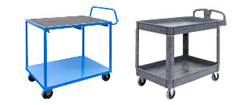

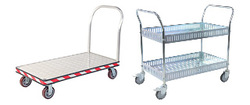
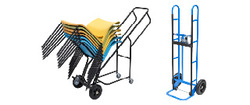
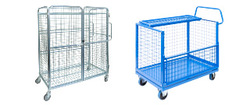
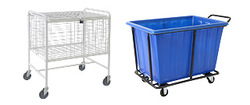
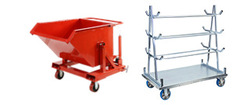
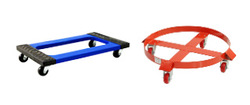
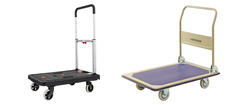
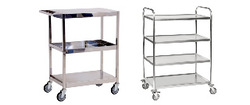
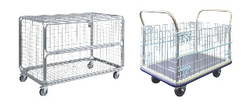
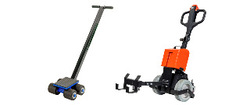
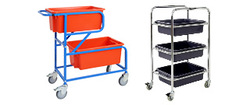
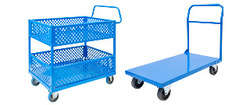
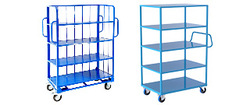
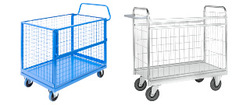
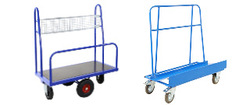
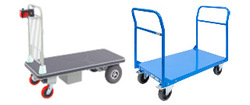
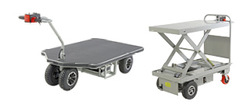
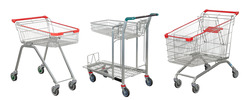
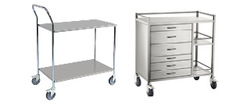
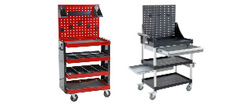
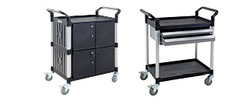
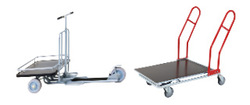
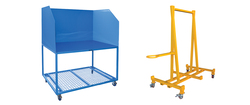



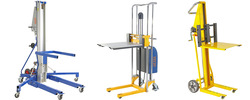



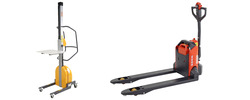
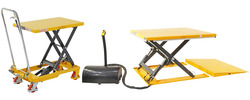
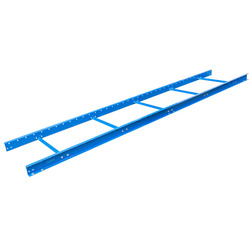
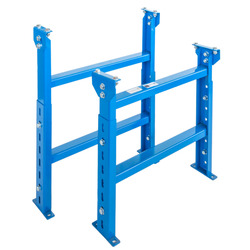
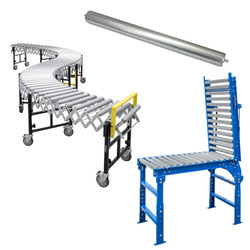
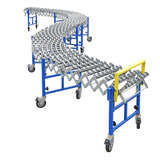


















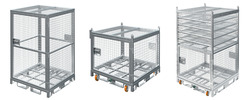

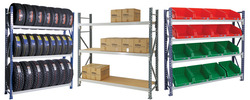
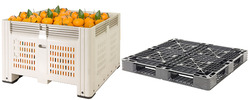
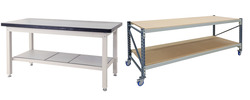
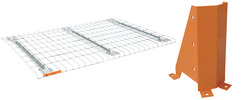
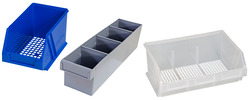

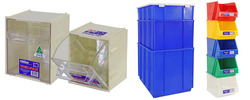

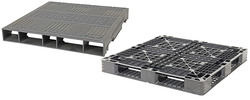

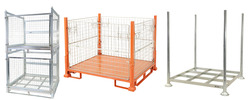
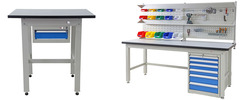







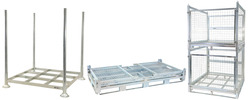
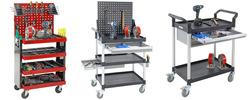
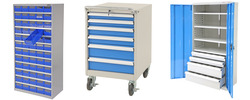













 Trolleys / Hand Trucks
Trolleys / Hand Trucks 2 Tier Trolleys
2 Tier Trolleys 3 Tier Trolleys
3 Tier Trolleys Aluminium Trolleys
Aluminium Trolleys Appliance & Hand Trucks
Appliance & Hand Trucks Cage Trolleys
Cage Trolleys Cleaning Carts & Trolleys
Cleaning Carts & Trolleys Construction Trolleys
Construction Trolleys Dollies
Dollies Foldable Trolleys
Foldable Trolleys Hospital Trolleys
Hospital Trolleys Laundry/Linen Trolleys
Laundry/Linen Trolleys Load Skates & Tow Tugs
Load Skates & Tow Tugs Mail / Office Trolleys
Mail / Office Trolleys Multi Purpose Trolleys
Multi Purpose Trolleys Multi-Tier Shelf Trolleys
Multi-Tier Shelf Trolleys Order Picking Trolleys
Order Picking Trolleys Panel Cart Trolleys
Panel Cart Trolleys Platform Trolleys
Platform Trolleys Powered Trolleys
Powered Trolleys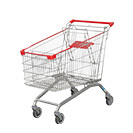 Shopping Trolleys
Shopping Trolleys Stainless Steel Trolleys
Stainless Steel Trolleys Tool Trolleys
Tool Trolleys Utility Carts
Utility Carts Warehouse Trolleys
Warehouse Trolleys Custom Trolleys
Custom Trolleys Lifting Equipment
Lifting Equipment Forklift Attachments
Forklift Attachments Jib Attachments
Jib Attachments Lifting Hoists & Pallet Hooks
Lifting Hoists & Pallet Hooks Manual Stackers & Lifters
Manual Stackers & Lifters Pallet Jacks
Pallet Jacks Pallet Lifters
Pallet Lifters Pallet Rotators & Dispenser
Pallet Rotators & Dispenser Powered Pallet Trucks & Electric Lifters
Powered Pallet Trucks & Electric Lifters Scissor Lift Trolleys and Tables
Scissor Lift Trolleys and Tables Conveyor Equipment
Conveyor Equipment Conveyor Frames
Conveyor Frames Conveyor Stands
Conveyor Stands Roller Conveyors
Roller Conveyors Skate Wheel Conveyors
Skate Wheel Conveyors Access Equipment
Access Equipment Container & Yard Ramps
Container & Yard Ramps Step Stools & Ladders
Step Stools & Ladders Work Platforms & Crane Cages
Work Platforms & Crane Cages Drum Handling
Drum Handling Drum Storage & Bunding
Drum Storage & Bunding Drum Trolleys & Lifters
Drum Trolleys & Lifters Forklift Drum Handling
Forklift Drum Handling Containment & Spillage
Containment & Spillage Aerosol Cans Storage Cages
Aerosol Cans Storage Cages Bunded Pallets & Storage
Bunded Pallets & Storage Corrosive Goods Storage Cabinets
Corrosive Goods Storage Cabinets Flammable Liquid Cabinets
Flammable Liquid Cabinets Forklift Gas Storage Cages
Forklift Gas Storage Cages Gas Cylinder Storage
Gas Cylinder Storage Site Storage
Site Storage Spill Kits
Spill Kits Stillage Cages
Stillage Cages Waste Handling
Waste Handling Bin Lifters & Tippers
Bin Lifters & Tippers Plastic Waste Bins and Carts
Plastic Waste Bins and Carts Steel Waste and Tipping Bins
Steel Waste and Tipping Bins Storage Equipment
Storage Equipment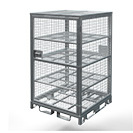 750 Series Cage Configurations
750 Series Cage Configurations Heavy Duty Cabinets & Benches
Heavy Duty Cabinets & Benches Heavy Duty Shelving
Heavy Duty Shelving Mega Bins & Pallets
Mega Bins & Pallets Packing Benches
Packing Benches Pallet Racking Accessories
Pallet Racking Accessories Parts Trays & Stor-Pak Bins
Parts Trays & Stor-Pak Bins Pegboard & Louvre Panels
Pegboard & Louvre Panels Plastic Bins
Plastic Bins Plastic Handling Solutions Bins
Plastic Handling Solutions Bins Plastic Pallets
Plastic Pallets Stack & Nest Bins
Stack & Nest Bins Storage Cages
Storage Cages Workplace Equipment
Workplace Equipment Workbenches
Workbenches Modular Workbenches
Modular Workbenches Electric Height-Adjustable Workbenches
Electric Height-Adjustable Workbenches Floor Matting
Floor Matting Industrial Weighing Scales
Industrial Weighing Scales Pallet Wrapping & Packaging Machinery
Pallet Wrapping & Packaging Machinery Ramps
Ramps Stationery Cupboards
Stationery Cupboards Storage and Stillage Cages
Storage and Stillage Cages Tool Trolleys
Tool Trolleys Tooling Cabinets
Tooling Cabinets Wheelie Bins
Wheelie Bins Workshop Equipment
Workshop Equipment Safety Equipment
Safety Equipment Gloves and PPE
Gloves and PPE Pallet Rack Post Protectors
Pallet Rack Post Protectors Safety Barriers & Bollards
Safety Barriers & Bollards Safety Knives & Cutters
Safety Knives & Cutters Signs and Traffic Supplies
Signs and Traffic Supplies Tool & First Aid Boxes
Tool & First Aid Boxes Construction Equipment
Construction Equipment Concrete Equipment
Concrete Equipment General Site Equipment
General Site Equipment Lifting Equipment
Lifting Equipment Site Storage
Site Storage Waste
Waste 










